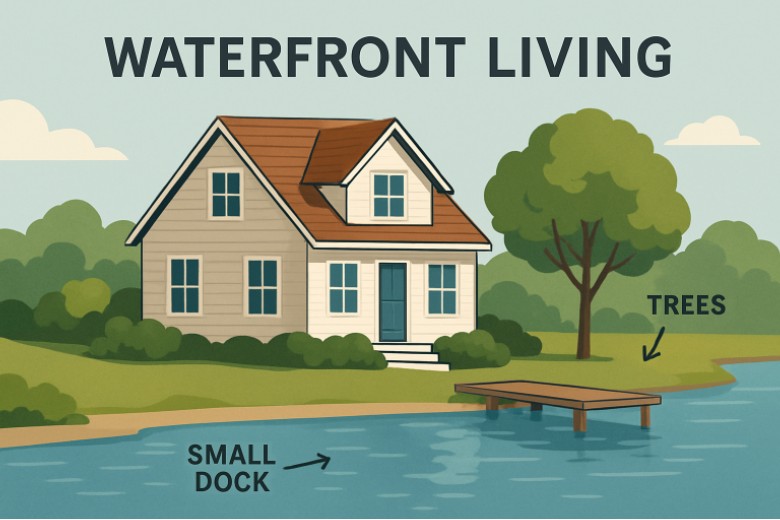Lifestyle Considerations In Waterfront Living
Waterfront living instantly conjures images of peaceful mornings, exotic sunsets shimmering over the water, and a direct connection to nature just beyond your doorstep. The serenity and recreational opportunities that come with living by the water are unparalleled. For those exploring Longboat Key homes for sale, the chance to blend luxury, privacy, and outdoor adventure is a truly enticing possibility. However, the dream of waterside living also carries distinct realities. Residents should be prepared for a lifestyle that balances convenience with certain responsibilities unique to waterfront ownership. Whether your interests include boating, fishing, or simply enjoying unobstructed views, understanding daily routines and seasonal fluctuations is key. Proximity to water often means adapting to local customs, respecting environmental regulations, and accepting that tranquility may sometimes be disrupted by boating or tourism activity.
Assessing Waterfront Property Features
No two waterfront homes are exactly alike, and the qualities that make each property special can dramatically affect long-term satisfaction. Critical elements to evaluate include the type of shoreline (sandy beach, rocky, mangrove-lined), water depth for boating, private or shared dock access, and how easily you can reach essential amenities like shops and healthcare providers. Features such as direct water access or private docking facility options can command premium value. Start by listing your non-negotiables—such as swimming-friendly water, easy kayak launches, or quiet coves away from busy waterways. Visit properties at different times of day, and if possible, during different seasons to gain a full understanding of what life will look like year-round.
Understanding Flood And Weather Risks
Risk management is a critical component of owning a waterfront home. Properties near the water face a heightened risk of flooding, erosion, and storm damage. According to FEMA flood maps, even minor flooding can initiate costly repairs and affect property resale value. Buyers should seek up-to-date flood zone maps, request prior insurance claims histories from sellers, and obtain guidance from local insurance professionals with waterfront expertise. Staying informed about climate trends and regional regulations—such as mandatory setback zones or restrictions imposed during hurricane season—can help you make a confident purchase.
Navigating Financing And Insurance
Purchasing a waterfront property typically involves more stringent requirements from lenders and insurers. Mortgage providers may ask for higher down payments, updated land surveys, and proof of comprehensive insurance with specialized riders for flood and wind events. Homeowners should compare quotes from carriers familiar with coastal policies, as annual costs can change with shifting regulations and risk assessments. This financial diligence is vital to ensuring that your dream home remains both an enjoyable and feasible investment.
Maintenance Factors Unique To Waterfront Homes
Owning a home at the water’s edge comes with unique maintenance demands. Saltwater environments accelerate corrosion on metal fixtures, while high humidity can encourage mold growth if not carefully managed. Seawalls, docks, and bulkheads require consistent inspections and timely repairs, and standard building materials should be upgraded to resilient, weather-resistant alternatives whenever possible. Establishing a proactive maintenance schedule is essential for protecting your investment, preserving structural integrity, and ensuring long-term enjoyment of your waterfront lifestyle.
Local Regulations And What To Expect
Due to ecological sensitivity and the potential for overdevelopment, local and state governments impose regulations that are often far stricter than those inland. Shoreline building codes may dictate the size and height of docks, preservation of native vegetation, mandatory buffer zones, and sometimes even limitations on night lighting to protect wildlife. Before finalizing a transaction, buyers should review relevant city or county ordinances and consult with a waterfront specialist or real estate attorney to mitigate the risk of future legal issues or costly remodeling delays.
Evaluating Market Trends And Long-Term Value
The market for waterfront properties remains strong, driven by a growing desire for privacy, natural beauty, and flexible work-from-home arrangements. That said, these properties are not immune to market cycles or environmental factors that may affect their appreciation. Performing a regional analysis, tracking comparable sales, and understanding local supply-demand dynamics can provide insights into whether you’re making a wise investment. Periodic market reports can help you assess resale prospects and adjust your expectations accordingly.
Step-By-Step Checklist For Buyers
- Clarify your waterfront living priorities and deal-breakers.
- Scout several neighborhoods to compare amenities and local ordinances.
- Order up-to-date surveys and environmental reports before offering.
- Meet with a lender familiar with the unique aspects of waterfront financing.
- Get multiple insurance quotes, including for flood and wind.
- Schedule a specialized inspection (including dock, seawall, and erosion assessments).
- Factor in annual maintenance costs; consider a reserve fund for emergencies.
Conclusion
Owning a waterfront home is a lifestyle choice that combines natural beauty with unique responsibilities. From assessing property features and flood risks to understanding financing, insurance, and ongoing maintenance, thorough due diligence ensures that the dream of waterfront living remains sustainable. Buyers can secure both personal enjoyment and investment value by staying proactive, respecting local regulations, and evaluating long-term market trends. Whether drawn to the tranquility of the shoreline or the vibrant opportunities for recreation, a well-prepared approach will make waterfront living not just a vision, but a rewarding reality.
